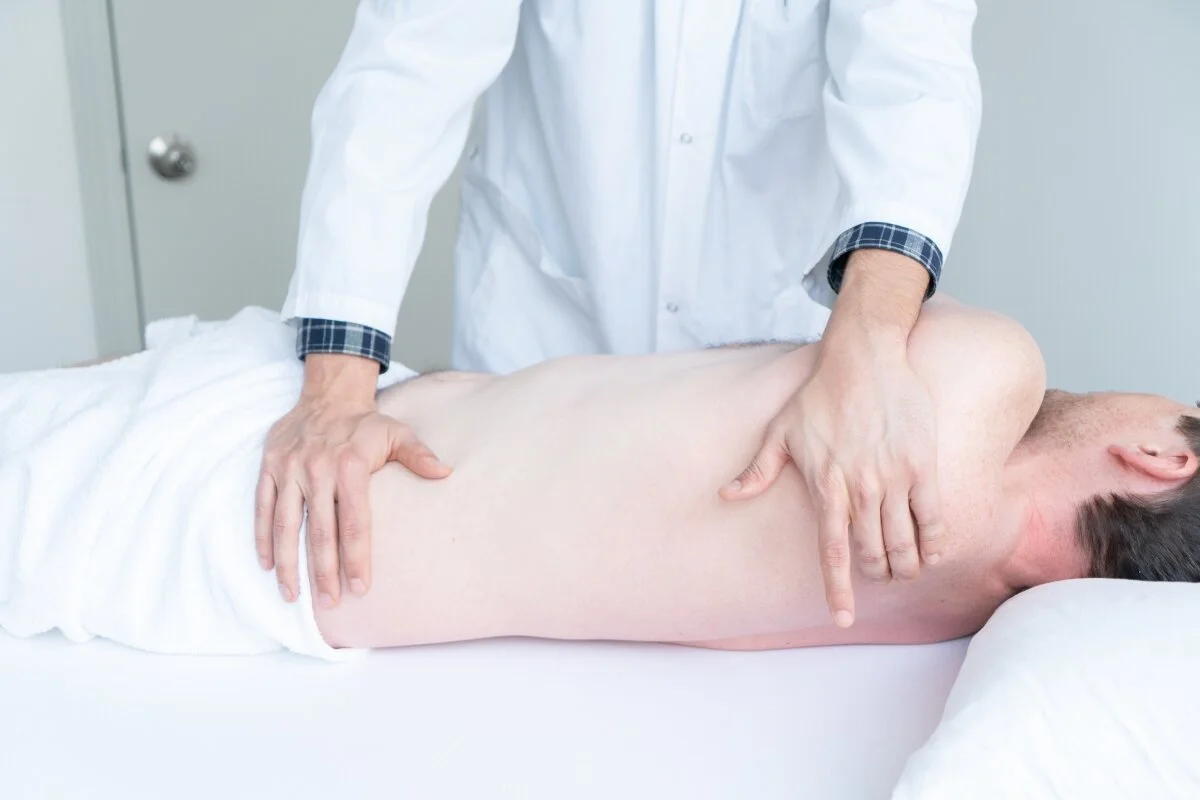Your Custom Text Here
Kinetic Swedish
Kinetic Swedish® massage consists of a series of massage techniques that are performed on muscles and tendons. Its aim is to achieve a deep relaxation of the muscles and thereby favor an increase in the range of motion – hence the term “kinetic.”
Kinetic Swedish® massage techniques involve the whole muscle – from one point of attachment to the other. In addition to relaxation, the benefits are numerous and reflect on the whole musculoskeletal and organic systems. They are:
Reduction of stress through a relaxed nervous system
Improved blood circulation
Improved skin suppleness
Decrease in muscular tension
Cranial sacral Therapy (CST)
Craniosacral Therapy
A cranial sacral therapy session involves the therapist placing their hands on the patient, which allows them to “tune into the cranial sacral rhythm”. Cranial sacral therapists treat mental stress, neck and back pain, migraines, TMJ Syndrome, and may help with chronic pain conditions such as fibromyalgia. Focus is placed on ‘re-booting’ an over-extended nervous system, thus allowing its parasympathetic component to take precedence. When the parasympathetic NS is in control of the body, the body can help to heal itself.
Structural Myofascial Therapy (SMFT)
Structural Myofascial Therapy (SMFT) is a deep, hands on therapeutic technique which, when coupled with postural somatic awareness exercises, treats the body’s myofascial system. This fascia is always affected after injury, surgery or prolonged periods of physical inactivity: It becomes rigid, fibrous and less movable. This in turn creates stiffness and decreases range of motion. SMFT directly treats the myofascia, thus freeing up adhesions and tautness and increasing flexibility and end range of movement. With slow and deliberate maneuvers, this work affects the myofascial structure with impressive efficiency.
Soft Tissue Release
Soft Tissue Release (STR) is a dynamic, highly effective modality that has an immediate and compelling effect on muscle and connective tissue. Combining the best of Myofascial Release, Therapeutic Massage and Active Assisted Stretching, we’re able to quickly treat both acute and chronic pain, while increasing flexibility and range of motion.
The technique involves applying precise pressure during a specific stretch performed in multiple planes of movement.
Common and immediate results include: Fast and permanent reorganization of scar tissue, correction of muscle imbalances and of muscle tone and increase in joint range of motion.
It's great for athletes who need treatment for injuries/maintenance or for those with a consistently tight musculature.
What is Fascia?
To perform a myofascial treatment is actually not to really give a massage at all, but rather a facilitation targeting a rarely heard of connective tissue called ‘fascia’.
Fascia is a thin but extremely sturdy fibrous tissue that serves as a veil over our bones, organs and muscles. Likewise, it is an uninterrupted, three-dimensional web of tissue that extends from head to toe, from front to back and from interior to exterior: As such, it is simply everywhere and with this in mind, proper attention needs to be placed on this critical and sometimes very fickle anatomical structure.
We know what fascia is, but what does it do? Simply, our fascial system serves to isolate, protect and connect our muscles, organs, nerves and blood vessels in the body. Without it, we’d have a ‘floating’, vulnerable anatomy that would not be able to withstand the rigor of everyday life. It is also richly innervated and thus heavily involved in the processes of nociception and proprioception. For a number of reasons, including disuse, overuse, poor posture, surgery, certain medications, insufficient stretching and injuries, the fascia and the underlying muscle tissue can stick together. This is known as an adhesion, and it results in restricted muscle movement along with pain, postural misalignment and reduced flexibility or range of motion, all of which can span from mild to severe depending on the circumstances.
Myofascial release is then a bodywork technique that has the freeing up of these said adhesions as its prime mandate. The approach uses no oil, as the bodyworker is looking for as much friction as they can afford to deconsolidate these troublesome clusters of tissue.
Myofascial release is a holistic approach that truly takes into account the intricacies and unequivocal interconnectedness of the human body. We call it a facilitation rather than a massage because, as myofascial therapists, we aim to instil longstanding benefits by opening up the body and its structures to their anatomically correct positions and by increasing mobility and tissular resilience, well before dysfunction took precedence.


